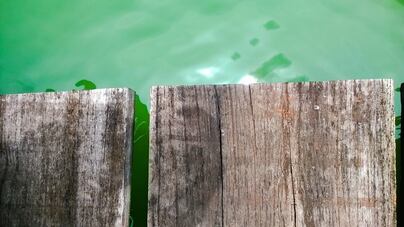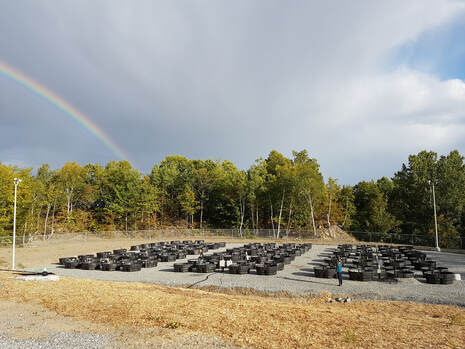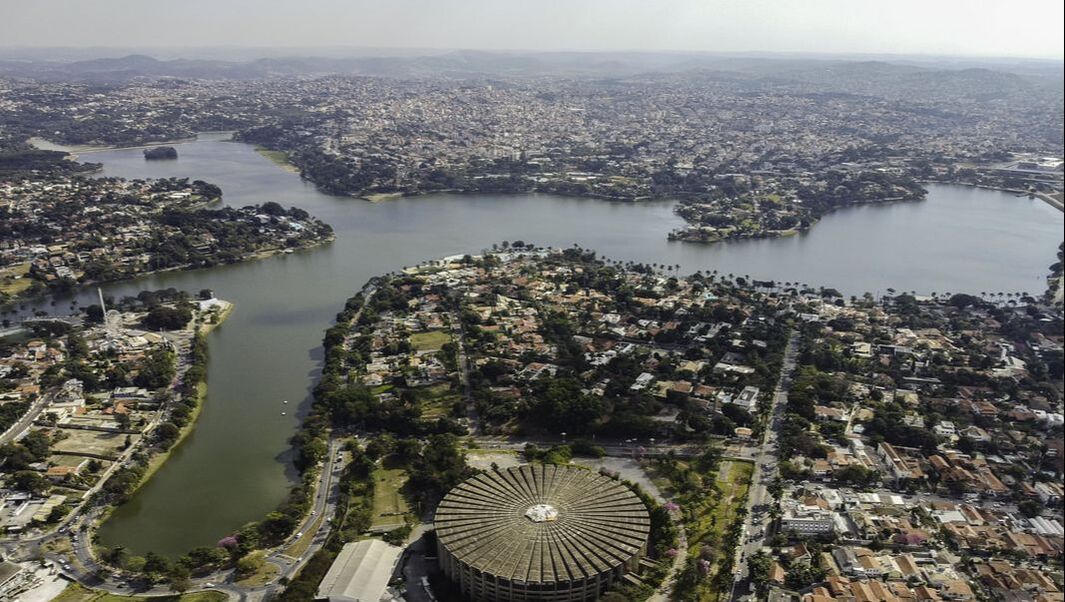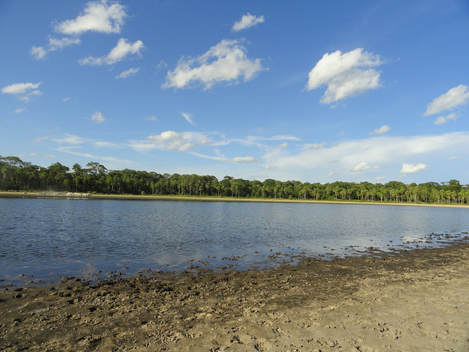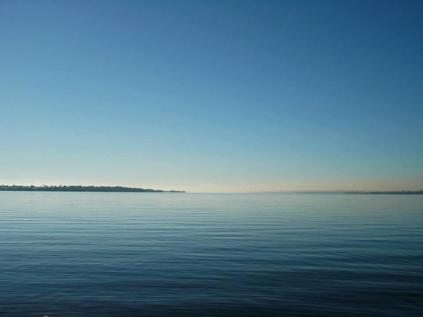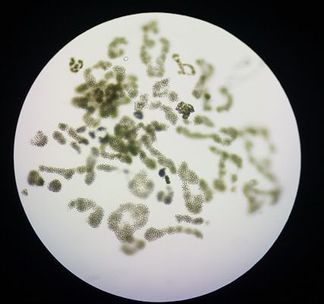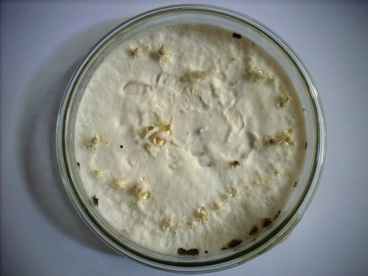|
Close-view of a freshwater body with cyanobacterial bloom (credit: André Félix)
|
Post-doc project (2023-now) - INRS-ETE (Canada)
Cyanobacteria originated billions of years ago and are among the oldest inhabitants in the planet. Nowadays, a few species are known to promote blooms that affect freshwater ecosystems and cause health and economic impacts. During my post-doc at INRS-ETE I am creating a culture collection of bloom-forming cyanobacteria in collaboration with Université Laval and the MELCCFP (Ministère de l'Environnement, de la Lutte contre les changements climatiques, de la Faune et des Parcs). I will use high-throughput sequencing technologies to investigate their genomes and look for cues of their ecological and evolutionary success in freshwater. |
Postdoc publications/collaborations:
2023 Potvin M, Gauthier J, Langevin C, Mohit V, Barbosa da Costa N, Deschênes T, Pomerleau M, Kukavica-Ibrulj I, Verreault D, Comte J, Levesque RC. Rapid on-site detection of harmful algal blooms: real-time cyanobacteria identification using Oxford Nanopore sequencing. Frontiers in Microbiology. doi: 10.3389/fmicb.2023.1267652
2023 Potvin M, Gauthier J, Langevin C, Mohit V, Barbosa da Costa N, Deschênes T, Pomerleau M, Kukavica-Ibrulj I, Verreault D, Comte J, Levesque RC. Rapid on-site detection of harmful algal blooms: real-time cyanobacteria identification using Oxford Nanopore sequencing. Frontiers in Microbiology. doi: 10.3389/fmicb.2023.1267652
|
LEAP experimental ponds in the Gault Nature Reserve (Mont Saint-Hilaire, QC, Canada)
|
PhD Research (2016-2022) - UdeM-Canada
Eco-evolutionary dynamics of microbial communities in disturbed freshwater ecosystems | Supervisors: Jesse Shapiro and Gregor Fussmann Aquatic microbial communities are constantly exposed to a combination of different stressors, usually brought from agricultural lands within the watershed. In my PhD, I studied the impact of commonly-used agrochemicals on bacterioplankton. I worked in collaboration with researchers from McGill University in the LEAP project to gather experimental data on how freshwater bacteria respond to environmental disturbances at the community, genetic and populational level. I also collaborated with the Lake Pulse microbiome research team producing sequencing data of bacterioplankton communities in lakes across Canada with different degrees of human impact. |
PhD publications/collaborations:
Barbosa da Costa N, Pérez-Carrascal OM, Hébert M-P, Fugère V, Gonzalez A, Fussmann G, Shapiro BJ. Genome-wide selective sweeps rarely explain the ecological success of bacterial populations responding to a novel environmental stress (in prep.)
Marie-Eve Monchamp; Zofia E. Taranu; Rebecca E. Garner; Tessa Rehill; Olivier Morissette; Lars L. Iversen; Vincent Fugère; Joanne E. Littlefair; Naíla Barbosa da Costa; Jessica E. Desforges et al. Prioritizing taxa for genetic reference database development to advance inland water conservation. Biological Conservation 2023 doi: 10.1016/j.biocon.2023.109963
Kraemer SA, Barbosa da Costa N, Olivia A, Huot Y, Walsh DA. A resistome survey across hundreds of freshwater bacterial communities reveals the impacts of veterinary and human antibiotics use. Frontiers in Microbiology 2022 doi: 10.3389/fmicb.2022.995418
Barbosa da Costa N, Hébert M-P, Fugère V, Terrat Y, Fussmann G, Gonzalez A, Shapiro BJ. A glyphosate-based herbicide cross-selects for antibiotic resistance genes in bacterioplankton communities. mSystems 2022 doi: 10.1128/msystems.01482-21
MacKeigan PW, Garner RE, Monchamp ME, Walsh DA, Onana VE, Kraemer SA, Pick FR, Beisner BE, Agbeti MD, Barbosa da Costa N, Shapiro J, Gregory-Eaves I. Comparing microscopy and DNA metabarcoding techniques for identifying cyanobacteria assemblages across hundreds of lakes, Harmful Algae. 2022 doi: 10.1016/j.hal.2022.102187
Barbosa da Costa N, Fugère V, Hébert M-P, Xu CCY, Barrett R, Beisner BE, Bell G, Yargeau V, Fussmann G, Gonzalez A, Shapiro BJ. Resistance, resilience, and functional redundancy of freshwater microbial communities facing multiple agricultural stressors in a mesocosm experiment. Molecular Ecology. 2021. doi: 10.1111/mec.16100
Hébert M-P, Fugère V, Beisner B, Barbosa da Costa N, Barrett R, Bell G, Shapiro BJ, Yargeau V, Gonzalez A, Fussmann G. Widespread agrochemicals differentially affect zooplankton biomass and community structure. Ecological Applications. 2021. doi: 10.1002/eap.2423
Fugère V, Hébert M, Barbosa da Costa N, Xu CCY, Barrett RDH, Beisner BE, Bell G, Fussmann G, Shapiro BJ, Yargeau V, Gonzalez A. Community rescue in experimental phytoplankton communities facing severe herbicide pollution. Nat Ecol Evol. 2020; 4:578–588. doi: 10.1038/s41559-020-1134-5
Kraemer SA, Barbosa da Costa N, Shapiro BJ, Fradette M, Huot Y, Walsh D. A large-scale assessment of lakes reveals a pervasive signal of land use on bacterial communities. The ISME J. 2020. doi: 10.1038/s41396-020-0733-0
Barbosa da Costa N, Pérez-Carrascal OM, Hébert M-P, Fugère V, Gonzalez A, Fussmann G, Shapiro BJ. Genome-wide selective sweeps rarely explain the ecological success of bacterial populations responding to a novel environmental stress (in prep.)
Marie-Eve Monchamp; Zofia E. Taranu; Rebecca E. Garner; Tessa Rehill; Olivier Morissette; Lars L. Iversen; Vincent Fugère; Joanne E. Littlefair; Naíla Barbosa da Costa; Jessica E. Desforges et al. Prioritizing taxa for genetic reference database development to advance inland water conservation. Biological Conservation 2023 doi: 10.1016/j.biocon.2023.109963
Kraemer SA, Barbosa da Costa N, Olivia A, Huot Y, Walsh DA. A resistome survey across hundreds of freshwater bacterial communities reveals the impacts of veterinary and human antibiotics use. Frontiers in Microbiology 2022 doi: 10.3389/fmicb.2022.995418
Barbosa da Costa N, Hébert M-P, Fugère V, Terrat Y, Fussmann G, Gonzalez A, Shapiro BJ. A glyphosate-based herbicide cross-selects for antibiotic resistance genes in bacterioplankton communities. mSystems 2022 doi: 10.1128/msystems.01482-21
- Q&A about the paper
MacKeigan PW, Garner RE, Monchamp ME, Walsh DA, Onana VE, Kraemer SA, Pick FR, Beisner BE, Agbeti MD, Barbosa da Costa N, Shapiro J, Gregory-Eaves I. Comparing microscopy and DNA metabarcoding techniques for identifying cyanobacteria assemblages across hundreds of lakes, Harmful Algae. 2022 doi: 10.1016/j.hal.2022.102187
Barbosa da Costa N, Fugère V, Hébert M-P, Xu CCY, Barrett R, Beisner BE, Bell G, Yargeau V, Fussmann G, Gonzalez A, Shapiro BJ. Resistance, resilience, and functional redundancy of freshwater microbial communities facing multiple agricultural stressors in a mesocosm experiment. Molecular Ecology. 2021. doi: 10.1111/mec.16100
- Press-release on this publication and Hébert et al. 2021
Hébert M-P, Fugère V, Beisner B, Barbosa da Costa N, Barrett R, Bell G, Shapiro BJ, Yargeau V, Gonzalez A, Fussmann G. Widespread agrochemicals differentially affect zooplankton biomass and community structure. Ecological Applications. 2021. doi: 10.1002/eap.2423
Fugère V, Hébert M, Barbosa da Costa N, Xu CCY, Barrett RDH, Beisner BE, Bell G, Fussmann G, Shapiro BJ, Yargeau V, Gonzalez A. Community rescue in experimental phytoplankton communities facing severe herbicide pollution. Nat Ecol Evol. 2020; 4:578–588. doi: 10.1038/s41559-020-1134-5
Kraemer SA, Barbosa da Costa N, Shapiro BJ, Fradette M, Huot Y, Walsh D. A large-scale assessment of lakes reveals a pervasive signal of land use on bacterial communities. The ISME J. 2020. doi: 10.1038/s41396-020-0733-0
